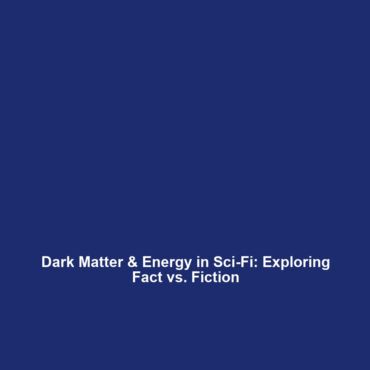Dark Matter Detection Experiments: Xenon1T, LUX-ZEPLIN, DAMA/LIBRA
Introduction
Dark matter and dark energy represent some of the most significant mysteries in modern astrophysics, accounting for approximately 95% of the universe’s total mass-energy content. The search for effective dark matter detection experiments, notably Xenon1T, LUX-ZEPLIN, and DAMA/LIBRA, plays a critical role in understanding the universe’s composition and the fundamental forces governing it. These experiments utilize advanced technology to seek out elusive dark matter particles, aiding our quest to unlock the secrets of dark matter and dark energy. This article will delve into their significance, applications, challenges, and future innovations.
Key Concepts
Xenon1T
Xenon1T is a direct detection experiment designed to observe weakly interacting massive particles (WIMPs), which are considered prime candidates for dark matter. Using a two-phase xenon time projection chamber, Xenon1T leverages the rare interactions between WIMPs and normal matter to identify potential signals of dark matter.
LUX-ZEPLIN
The LUX-ZEPLIN experiment significantly enhances sensitivity compared to previous dark matter detection efforts, using a large tank of liquid xenon to capture potential WIMP interactions. It aims to either discover dark matter or place stringent limits on its properties.
DAMA/LIBRA
In contrast, DAMA/LIBRA employs a different strategy by focusing on the modulation of the rate of interactions with dark matter particles throughout the year. Its results have sparked significant debate in the scientific community about the nature of dark matter and its interactions with ordinary matter.
Applications and Real-World Uses
The implications of dark matter detection experiments such as Xenon1T, LUX-ZEPLIN, and DAMA/LIBRA are profound:
- How Xenon1T is used in dark matter research: Advanced detection technologies are expected to pave the way for breakthroughs in understanding particle physics.
- Applications of LUX-ZEPLIN in cosmology: By refining models of dark matter interactions, LUX-ZEPLIN has the potential to enhance astrophysical phenomena analysis.
- DAMA/LIBRA’s role in theoretical physics: The findings could lead to revisions of existing models of particle physics, shaping future theoretical frameworks.
Current Challenges
Despite remarkable progress, the quest for detecting dark matter faces several challenges:
- Technological limitations in achieving the sensitivity required for detection.
- The need for large-scale facilities, which incur high costs and logistical challenges.
- Competing theories of dark matter that complicate interpretations of experimental results.
- Issues in isolating signals from background noise, making it difficult to confirm findings.
Future Research and Innovations
Looking ahead, research into dark matter detection experiments promises significant innovations. Upcoming projects are focusing on next-generation technologies that may improve detection capabilities and reduce background noise. The anticipated advancements could include:
- Utilizing new materials and technologies for enhanced sensitivity.
- Developing hybrid detection techniques that combine multiple methodologies.
- Global collaborations that aim to pool resources and expertise.
Conclusion
In summary, the dark matter detection experiments of Xenon1T, LUX-ZEPLIN, and DAMA/LIBRA are vital to our understanding of the universe’s structure and the elusive nature of dark matter and dark energy. Ongoing research and innovation in this field hold the promise for future breakthroughs. To learn more about dark energy’s role in cosmology, we invite you to explore our articles on dark energy research and its implications on gravitational theories. Your journey into the cosmos begins here.









